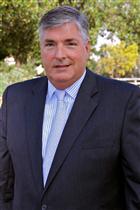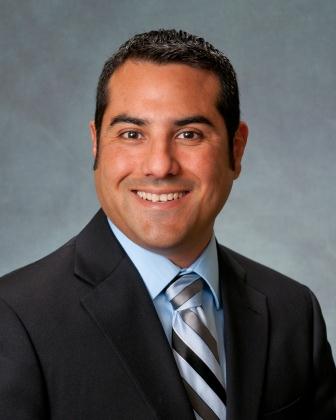Greetings—
Thanks in part to the computer revolution and the internet, we are awash in data. It sometimes seems as if the more data we have, the more information we want. With the search engines making it easier than ever, those of us who are data hogs have entered a sweet spot.
We know that doesn't always make us the most popular people in the room, but I believe answers to the right questions help us become better at what we do.
As funders, we look at data from a couple of perspectives, one of which underscores a core element of our business: how do we know what we are funding is making a difference? Because we fund projects, organizations and people, the data needs to come from those who are helping the clients, doing the services, building the community and healing the brokenness.
Our board recently received a report that looked at our competitive grantmaking over the past seven years. This data helps us understand the impact of our grantmaking on the grantees and the community itself. One of the questions we ask: who are we helping and does that population have the greatest need? With over $7 million deployed over nearly a decade, that is an important question.
One of the benefits, and burdens, of developing a robust evaluation discipline is that it allows us to address impact, and to use that data as a way to strengthen and improve the next cycle of our work. Sharing this framework helps donors make better decisions about their chosen philanthropic investments, and helps us at the strategic level assess the impact we can make in our own grantmaking.
Who else cares? I believe there is new sense of accountability in the land, from those who want assurances that public monies are being spent effectively to individual donors, who respect charitable dollars are scarce and should be spent wisely.
But the options are changing too, as an interconnected world opens more opportunity to invest in change. In an era when a $50 gift online to Kiva.org can change the life of a woman in the developing world by helping her buy a cow - and thus transform her life, her family's life and help lift her out of global poverty, the question of impact can take on new relevance, and urgency.
Nonprofits are dealing with this reality as donors ask about operating and program costs and third party evaluators rate nonprofits on (among other things) on the effectiveness of their business models. As we emerge from the worst economic contraction in decades, all of us look carefully at the funds we have to invest in charitable work. We ask more question than we used to, in part because we, too, have become “value investors”. A generation that grew up on Consumer Reports wants the facts before we make our purchases, and we now have realms of data at our finger tips to make us informed. And some of this data may be useful in making wise decisions!
Sometimes, the data shows the importance of keeping the doors open. In my prior job in Ventura, we found ourselves a weekend away from closing every domestic violence shelter in the County due to funding pressures. Folks stepped up, donations were made, and three of the five shelters remained opened.
Often the power of our gift is distinctly individual, and compelling. I will never forget a letter I received from a scholarship recipient, which started with: "you have no idea what it means to me and my family to say the following six words: I get to go to college. Thanks to the generosity of [the donor], I get to earn a living with my brain as opposed to my back." It is hard to think of a more potent example of the power of investing in a promising future than through a scholarship.
But when we think about systems change, or adjusting institutional priorities, it becomes murkier. I remember a conversation from the dean of an education school that was responsible for training teachers who remarked, almost offhand, that an easy way to ensure the arts remained in our schools was to add an art history unit to the required course load. He could change the curriculum because he could; that he considered it reflected the persistence of those who raised the importance of the issue, the impact of the change and the value of the outcome.
Changing institutions, programs and outcomes is partially about changing priorities, partially about changing people's minds, and partially about addressing my favorite question, “to what end?”
It is also about changing expectations, that change can come and, for some, that it must come. What are we trying to achieve? What can we achieve? How do we know we are making a difference? How can we tell? As funders, we seek these answers because we respect the stewardship of the monies entrusted to us, and we want to continue to earn that trust. Thus we focus on the results and impact, to ensure donor intent is protected; the answers lie in the data, data emerging from the right questions.
Earlier this month, I went to a convening of public and nonprofit groups, community and elected leaders committed to the wellbeing of our children, who were exploring the right tools to identify need and measure impact. The theme of the morning was that data should be a flashlight, not a hammer: a flashlight to help us look for the ways we can strengthen the future, not the hammer to drive home failure, shortcomings and the difficulty of change.
My father used to remind me that facts were stubborn things, something he learned in his newspaper days. Data is both dispassionate -- this is what happened - and incendiary -- this is what is happening, right here in our community, today (!) It can be both the hammer and the flashlight, a tool to inform and to ram home accountability, a means to measure progress and define the distance still to travel.
Many have heard the story about rescuing the babies in the river, and those that decided to move upstream to find out who was throwing the babies in the first place; their quest was to stop the problem at the source. It is compelling anecdote, but it also masks the challenge. There is a new wind blowing, in part a new generation who wants to change the status quo (“enough is enough”), in part those frustrated at the intractable problems and complex behaviors that continue to result in poverty, broken lives, wasted opportunities and unfilled potential.
Data measures these shortcomings, and can help measure change. If used thoughtfully, it can move beyond identifying and naming the causes to creating goalposts, encouraging strategies and developing tactics that can, in the lexicon of the moment, actually move the needle. We can also use tools like the Fresno Scorecard to help us understand better what is happening, where the challenges are and what can motivate change.
As a community foundation committed to place, and to this place, we can do a better job if we start with the facts and the current reality, ask the right questions and track progress. We believe we will increase the odds that smarter investments and solutions can create sustainable and meaningful change, particularly if we work together with those who are working on the same ends, sometimes on a parallel track and sometimes in direct partnership. It might be keeping open the doors to the clinic, opening the doors of opportunity for a better life to a student, or helping institutions become better at delivering their mission.
If we marry that role with the powerful desire to focus change, to make a difference, to help institutions that truly bridge the priorities of the public purse and the private wallet, we can also raise the confidence that community philanthropy helps shape our future to be a better place, even it occurs one painful step at a time.
The flashlights are most helpful when the light is dim and the pathway is uncertain; it points us to that better future. Come join us in this good work.
Best Regards,
Hugh J. Ralston
President and CEO


 Dear Friends of the Foundation,
Dear Friends of the Foundation,
Comments